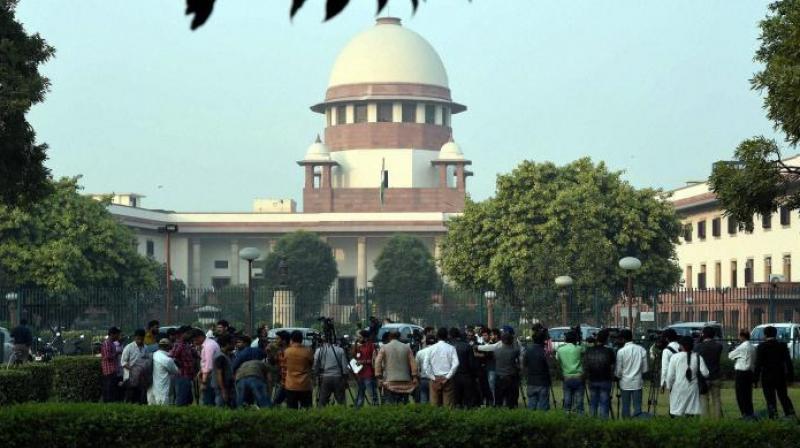To be seen as fair, SC needs to set bar higher

An extraordinary situation, indeed a very sensitive one, has been created by the former Supreme Court junior employee, who brought a sexual harassment charge against Chief Justice of India Ranjan Gogoi, walking out of the in-house inquiry set up to get to the bottom of things, saying she was intimidated and had no hopes of transparency in the process instituted to arrive at the truth.
In short, this is an allegation of the absence of fair play in the institutional processes in the inner workings of the country's highest judiciary, an assertion whose negative fallout can be checkmated not by shutting down the proceedings but by putting everything on the table.
It is not inconceivable that the woman's complaint is entirely fraudulent, malicious and motivated by dark concerns. Nevertheless, the jurisprudence we swear by gives the worst criminal a fair hearing and trial. The matter turns more complicated when a charge of sexual misconduct is involved concerning a dalit woman. It was all the more necessary in such a context to frame the inquiry process in such an open way that any charge of bias will invite ridicule.
That, alas, hasn't been the case. The Supreme Court, to start with, didn't establish an in-house inquiry panel with a majority of women. When this end was met on the complainant crying foul, the inquiry body didn't have any external entity, as prescribed under Vishakha guidelines.
Now the complainant alleges she was told by the three-judge committee headed by Justice S.A. Bobade that they were only conducting an "informal" inquiry, not proper in-house proceedings, leave alone proceedings under the Vishakha framework. If true, this is well below the standard that the country's highest court should be setting for itself.
The woman has said she was also informally made an offer of getting her job back (she is a sacked employee) and was asked to consider the reputation of the institution - the Supreme Court - that is in the public eye due to her highly-publicised complaint. This amounts to bribery. If the insinuation is false and malicious, she would not have been in a position to bring it if an audio-visual recording of the process - which she has demanded - had been kept from the beginning.
This is an instructive saga of our times. It is a reminder that institutions must be seen to be pristine and those wielding the highest authority sanctioned to them by the Constitution serve the public cause and their own best when they exhibit standards that draw admiration rather than doubt. Strangely, however, as we witness the increasing socialisation of democracy and expansion of the public space in the Internet era, we also see the attempted subversion of institutions upon which the practice of democracy rests - and the leaders in this have been various arms of the State at the highest levels.

